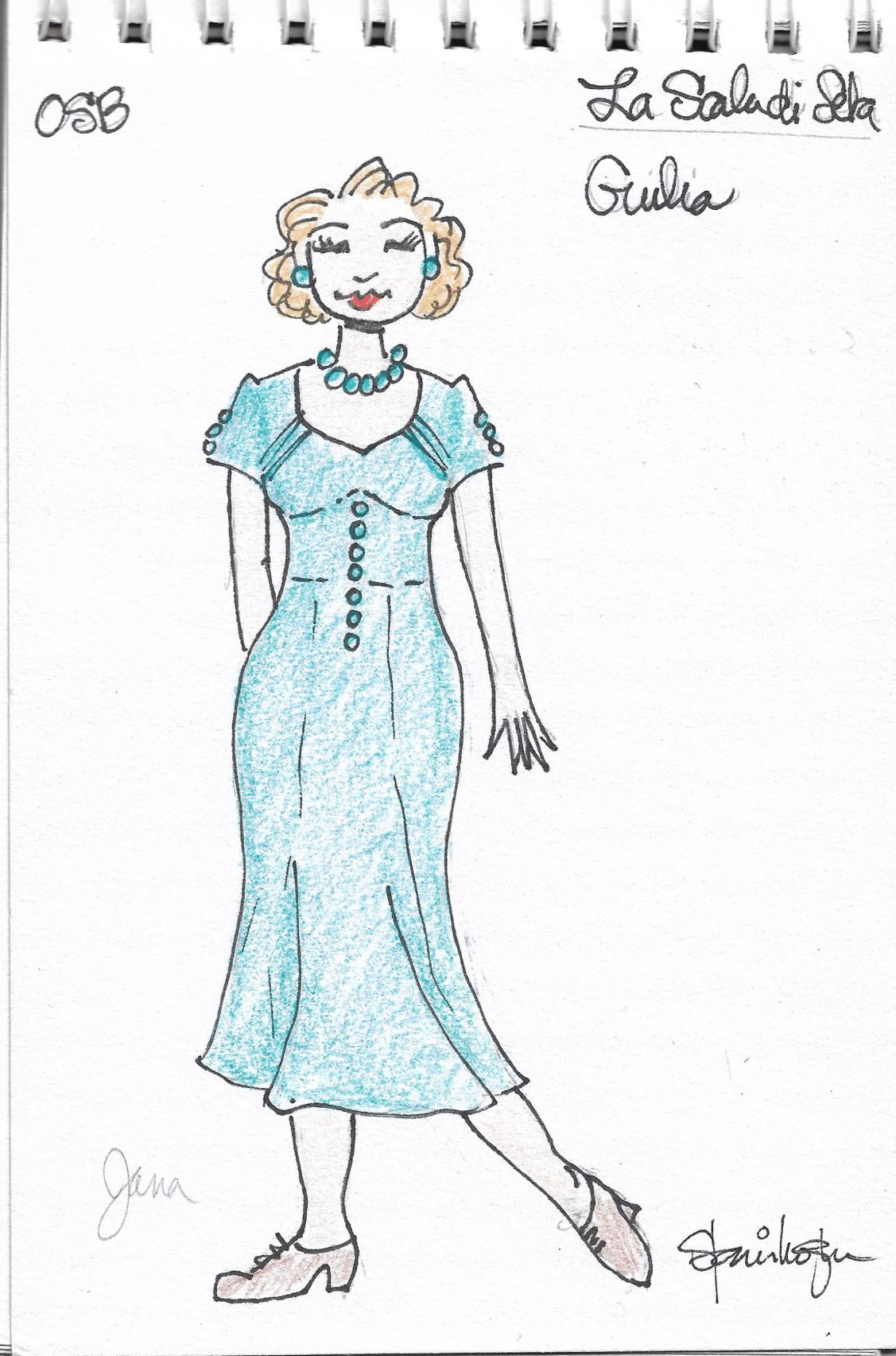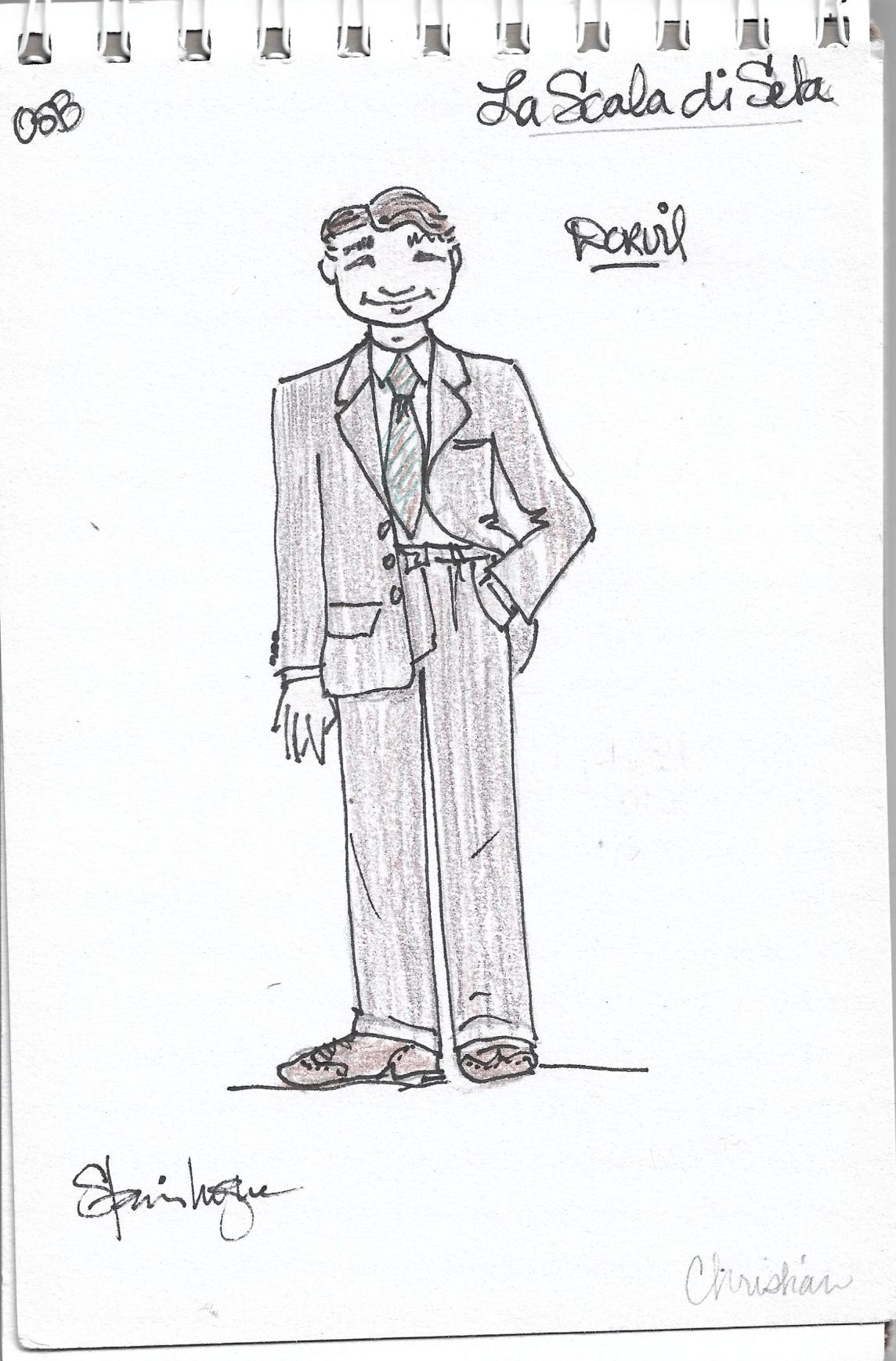Opera Santa Barbara Costume Manager Stacie Logue gives us the background on costuming our next opera in the 22|23 season, La scala di seta.
Opera Santa Barbara’s next main stage production is La scala di seta (The silk ladder), a one-act comedic opera by Rossini. It is not done often, so it should be fun to experience the zany staging by Josh Shaw, who is directing the production.
My name is Stacie Logue and I am the costume manager for OSB. My duties encompass all things costumes. For instance, I coordinated the costume rental package for Tosca from Utah Opera. For the classic grand operas with a large cast and chorus, we usually rent the costumes from larger opera companies. Because La scala di seta is a smaller opera with six characters, we are able to do original costume designs.
When I design costumes I start by becoming familiar with the opera. I start my research online where I find a synopsis of the plot, list of characters and their vocal types, as well as the history of the opera’s productions and background on the composer & librettist.
Before Josh contacted me to discuss the costumes, he had already worked with our Artistic and General Director Kostis Protopapas on the concept of the production. They had decided to set the story of La scala in the 1930s in a tailor shop. Once the stage director & artistic director have decided on the concept and I have an idea of the story and characters, we are ready to chat about costumes.


Josh will go through the story with me describing each character including his or her personality and appearance. With the story taking place in a tailor shop, the character Dormont, will be the owner of the shop. He is an older gentleman who is a guardian to the principal female, Giulia. She is the beautiful ingénue and shop clerk, and lives in an apartment above the business. Giulia’s cousin, Lucilla also works in the shop and is a “Plain Jane” type. Germano, is the janitor for the shop and Dormont’s factotum. Blansac is a customer who is very particular about his look. Dormont also thinks that Blansac would be a good husband for Giulia, and is trying to arrange a match. What Dormont does not know is that Giulia is already secretly married to the handsome Dorvil. The last thing Josh told me was “make the ladies beautiful & the men handsome. And give me color!”


With this information I start my visual research. I look at fashions from the 1930s and put together an inspiration board for myself. A main source of inspiration for me are classic films from the period. I love movies from the 30s and 40s. Movies such as Damsel in Distress starring Fred Astaire and Ginger Rogers, The Thin Man series and It Happened One Night gave me ideas of what Giulia and Lucilla would look like. The dapper suits of the men in these movies inform the tailored look we need for the male characters.
My online research includes looking at contemporary clothing made in retro 1930s fashion. I am choosing to buy most of the dresses for the ladies and pull suits from our stock. If what I have in stock does not fit our singers, then I will rent what I need in Hollywood. I am careful with the rentals because some of the clothing is vintage 1930s and will not hold up to the rigors of theater staging.


I also have to consider any “quick changes” (when a character has to change costumes quickly) and the silly comedic gags that Josh reliably comes up with in rehearsal. In both cases I will have to alter the costumes in such a way that renting is out of the question. Rental costumes can only be altered in a way that does not permanently change the garment.
Once I finish my sketches, I show them to Kostis and Josh for approval. Once they approve, I start my hunting and gathering. When I have everything in hand and Josh is in town, we do a costume walk through so that he can see what everything looks like. At this point fittings with the singers begin, and more changes are made.
From the fittings I get an idea of the costume shop’s workload of alterations. For La scala, Jane Hatfield, our costume assistant and I will be able to handle the workload. For bigger shows, like La Traviata, we hire additional professionals to help with the chorus costumes. During the two or three weeks of rehearsal for each opera, the director sends notes daily regarding costume needs such as pockets for watches, letters, knives, etc. Costumes are expected to be ready by the time we move into the theater for dress rehearsals about a week before the show. After that point we expect to have to do only minor tweaks, but every once in a while a major change can come up a couple of days before the performance.
It is a lot of work from concept to finished costumes on stage. But I enjoy the many skills it takes to complete each production, and I love making our singers look their best!
See the costumes and the rest of the production all come to life on Sunday, November 13 at the Lobero Theatre. Get tickets to.



